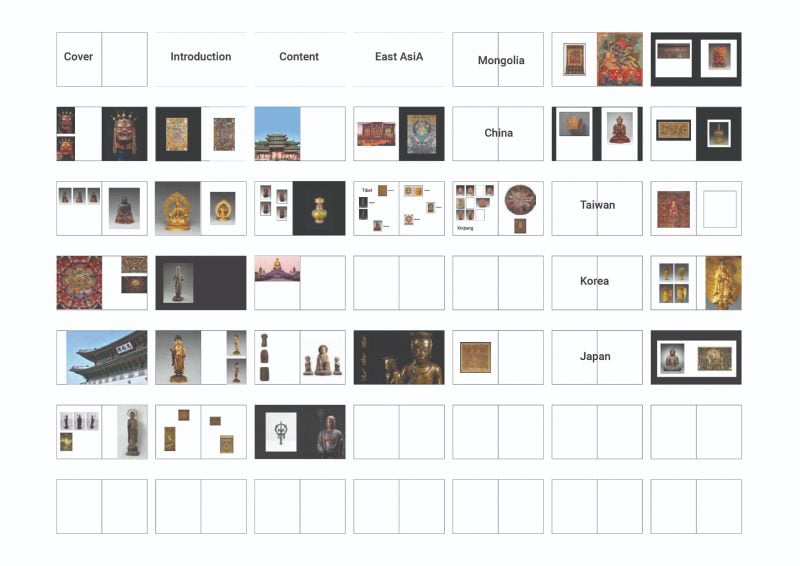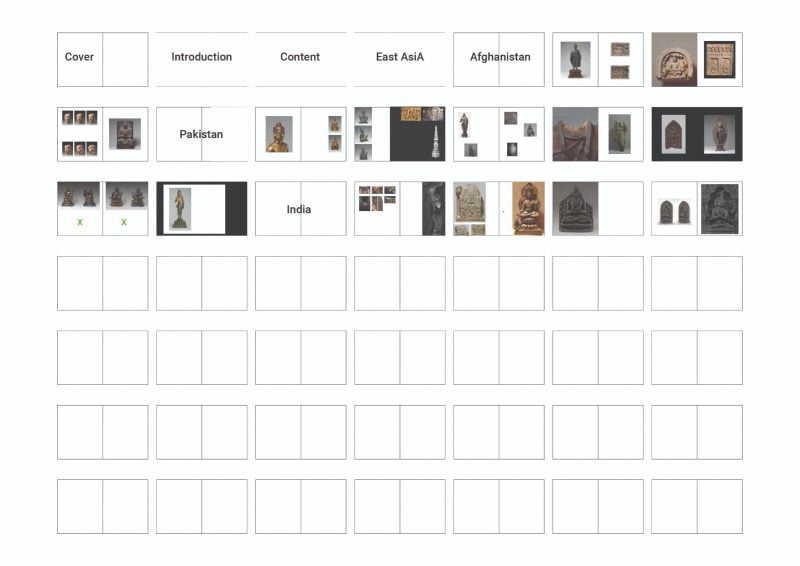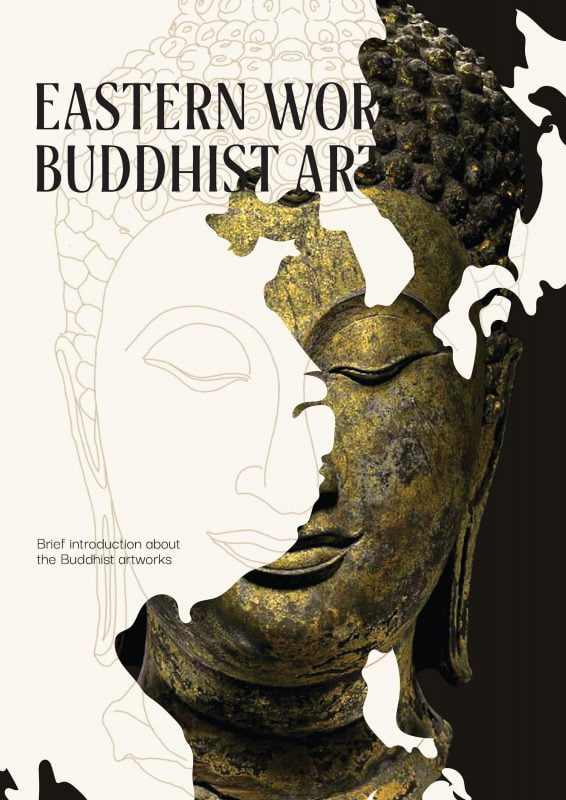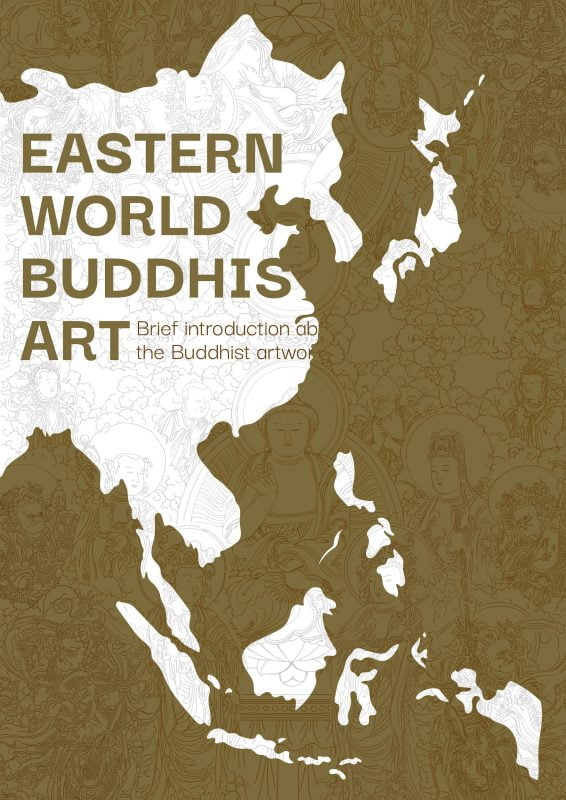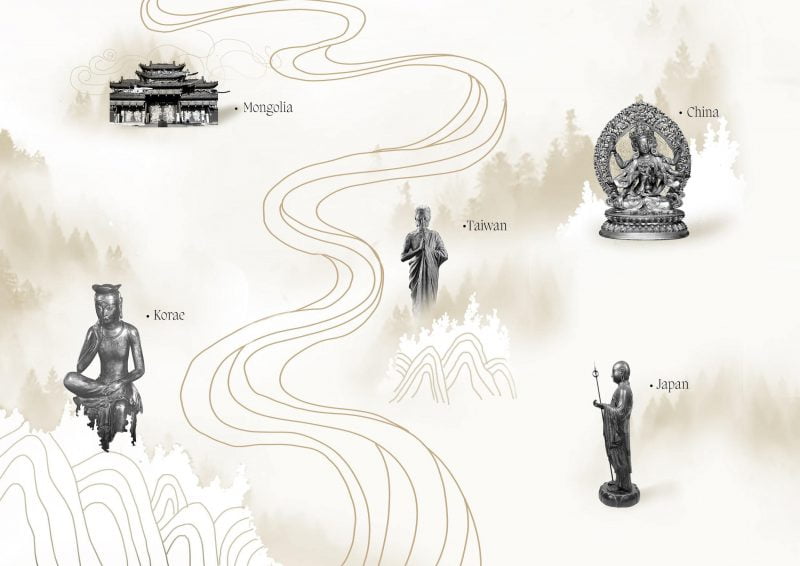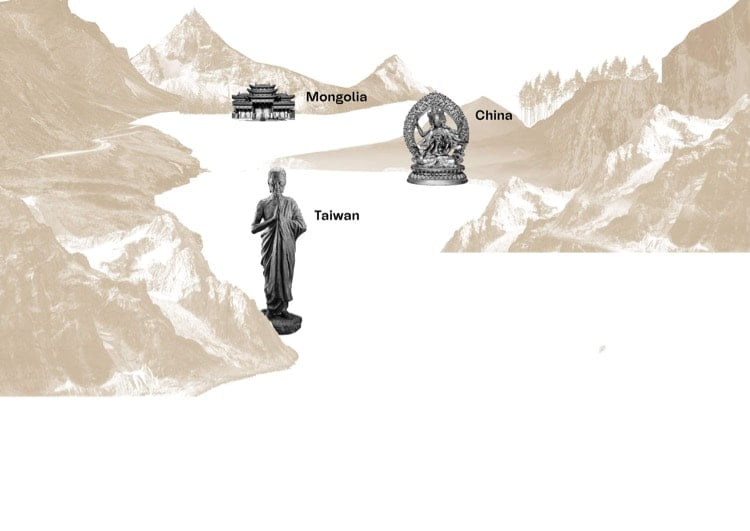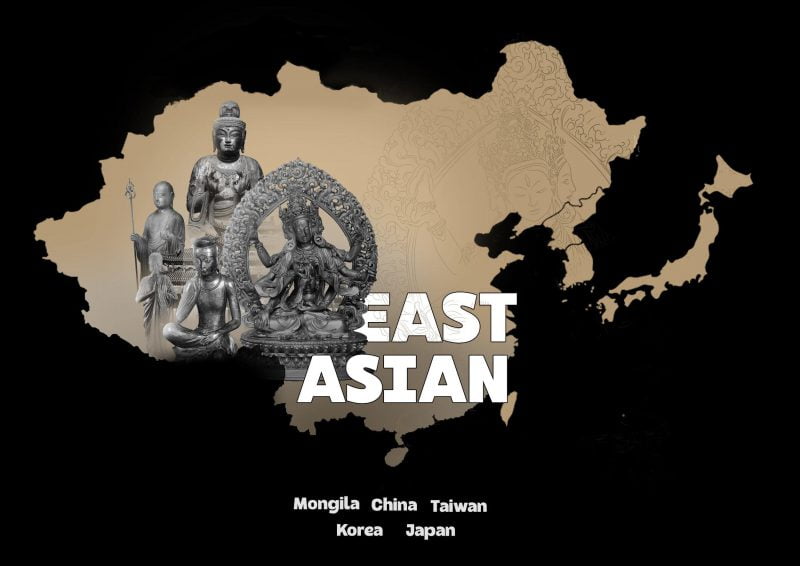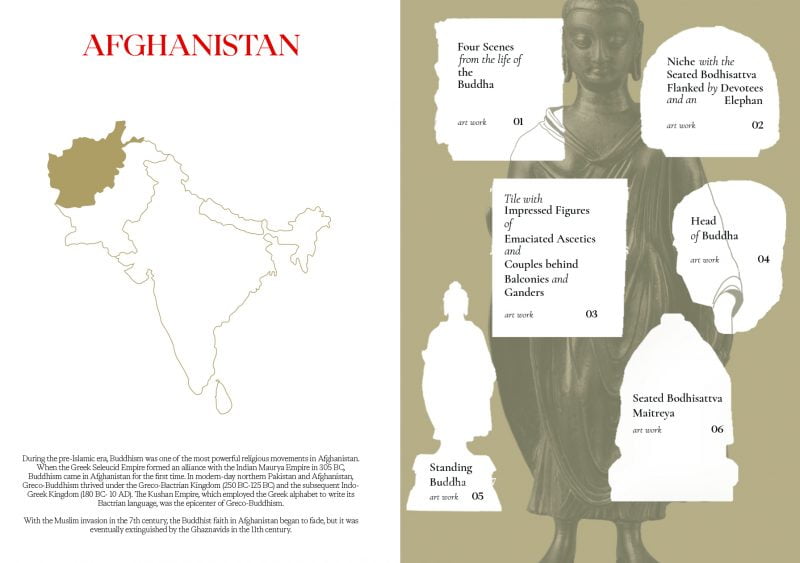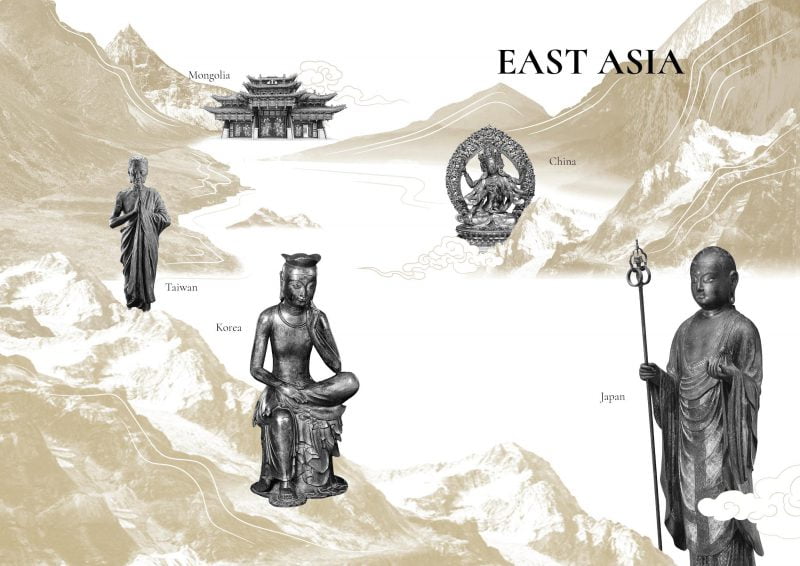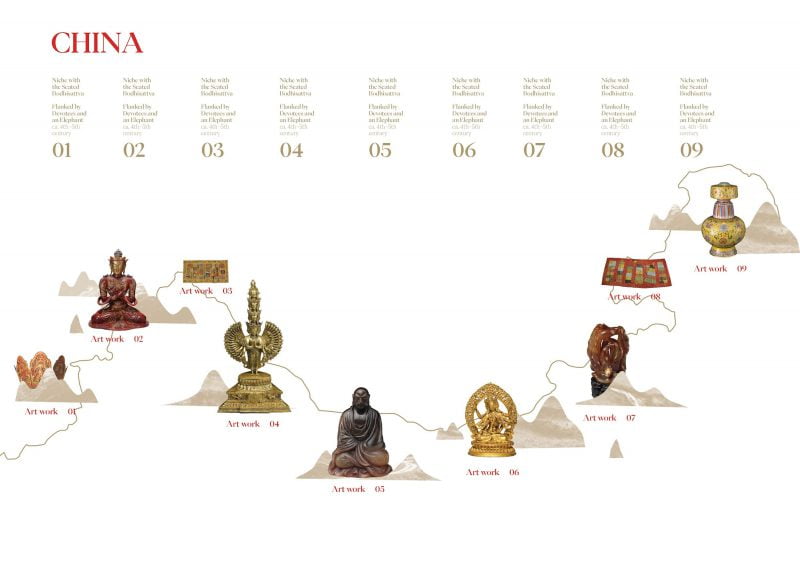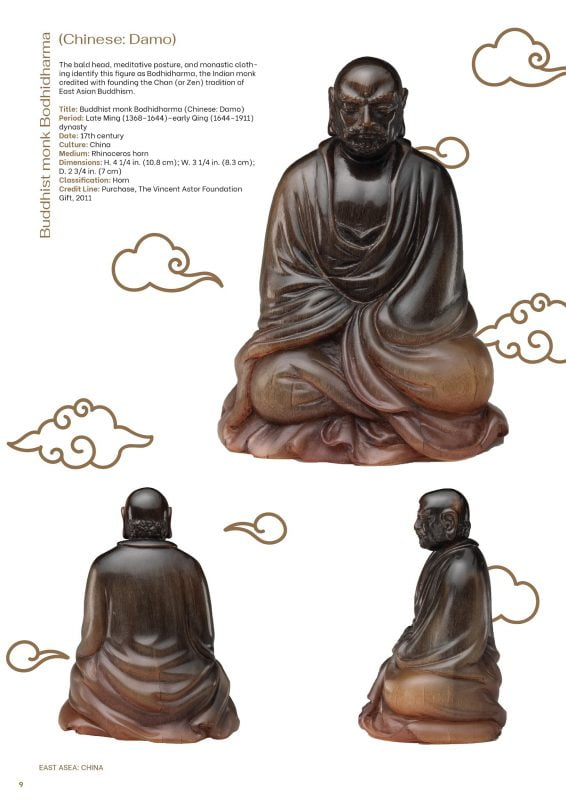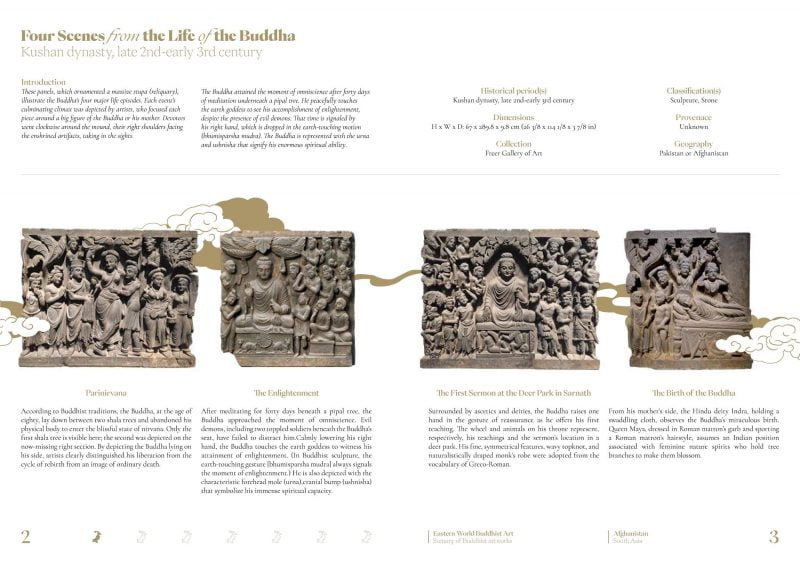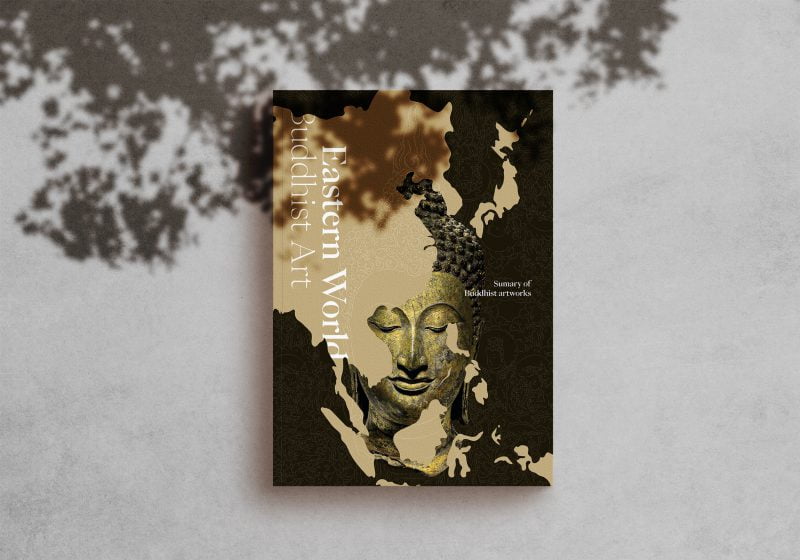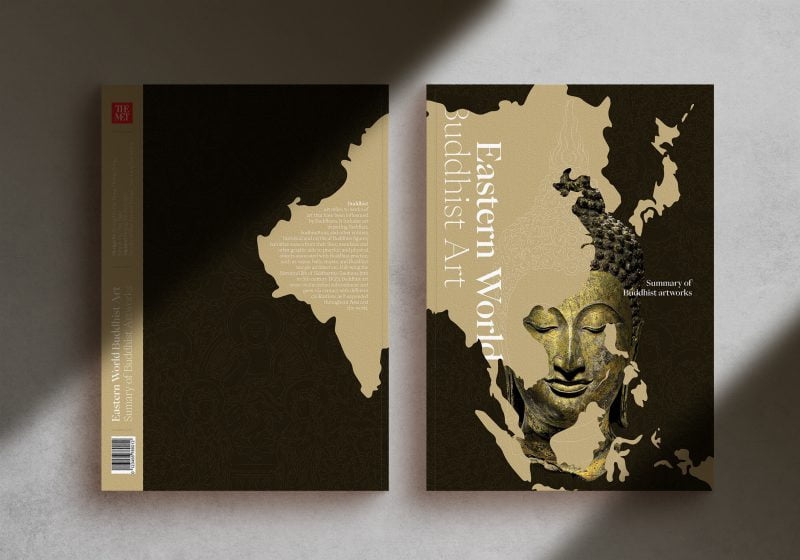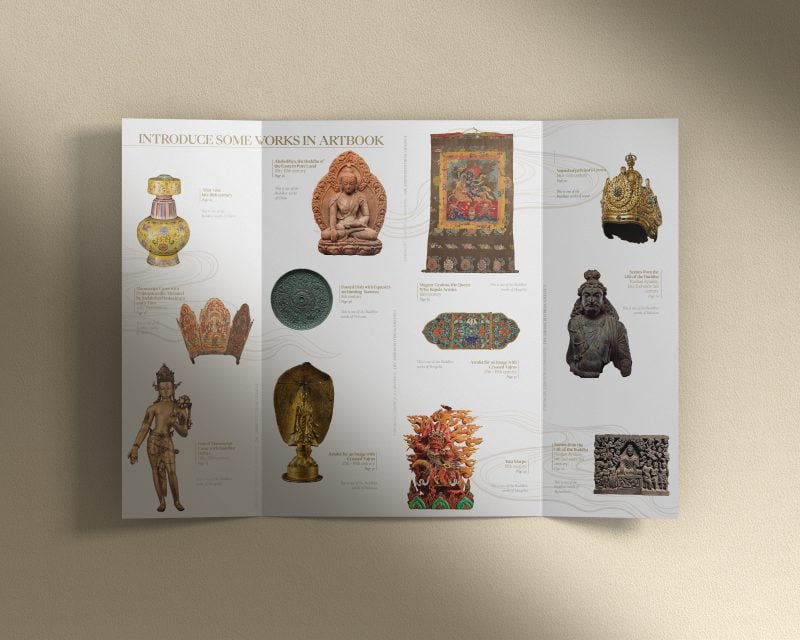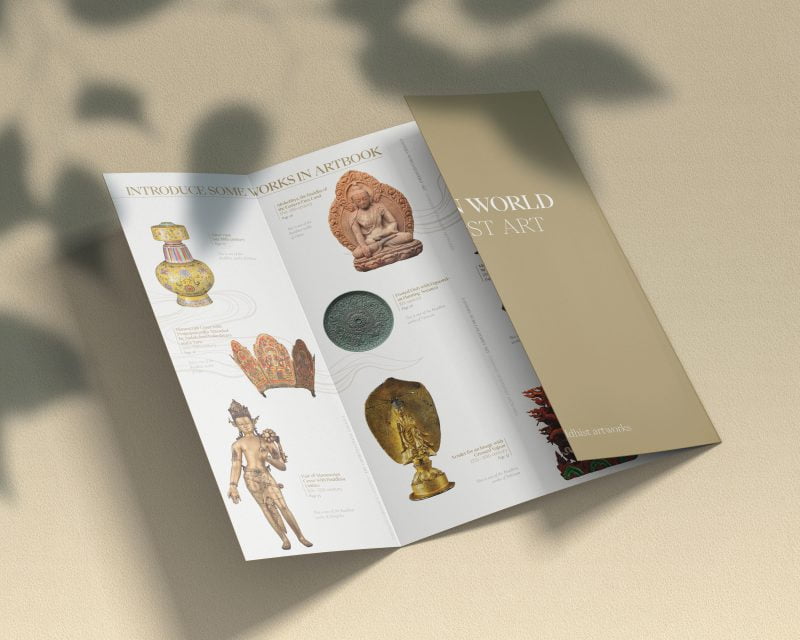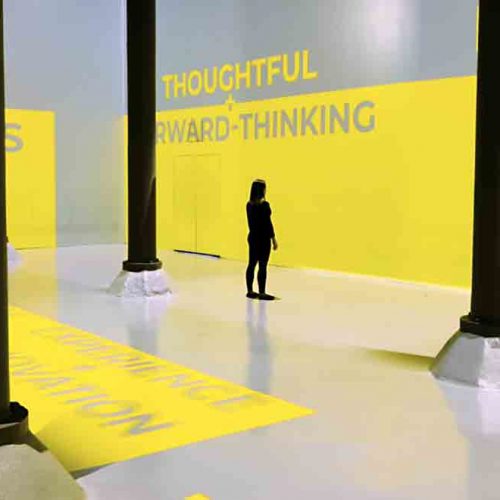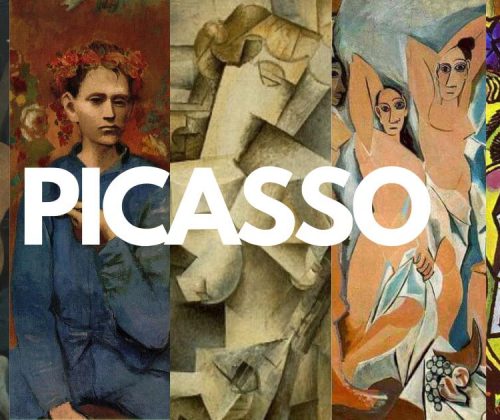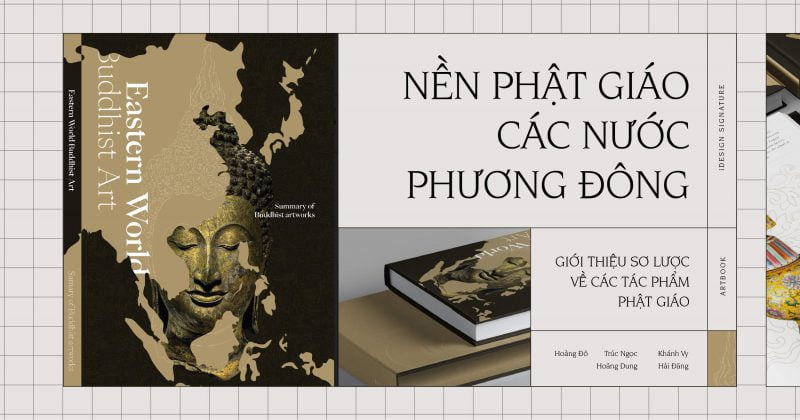
Buddhism is one of the five largest religions in the world, originating in India – the cradle of human civilization. After thousands of years of development, the Buddha’s ideas have gone beyond the territory and spread widely to Eastern countries. Philosophers and images from Buddhism have always been the inspiration for many works of art. In different countries and different times, works on Buddhism always have certain characteristics.
Excited about this close but little-exploited topic, a group of students majoring in Graphic Design, course K24 at Van Lang University decided to choose the topic of Buddhism for the subject . and design school magazines. Although it is only within the framework of the assignment for the course and only has 2 months to complete the project, the 212 pages of the artbook in the book Eastern World Buddhist Art – Summary of Buddhist artworks about Buddhist works) has shown the enthusiasm and thoughtfulness of the young students.
A little introduction to Eastern World Buddhist Art . This is an artbook that aims to provide readers with images and brief information about Eastern Buddhist works. Thereby, the author hopes that readers will have a broader view of Buddhism, seeing the diversity of Buddhist art works of different countries in each period. From there, readers can feel the beauty of Buddhist art and the unique features of Buddhist culture between countries.
Contact information pages
Hoang Do (project leader) | Hai Dang | Khanh Vy | Truc Ngoc | Hoang Dung
It is known that the project of Eastern World Buddhist Art is the topic of your choice for the subject of Journalism and magazine design. So why did you choose this topic for your course? Are there any Buddhists in your group? (If yes) How did it impact you during the project?
At first, we split up to find and collect different ideas. As a result, most ideas are culturally relevant. In which, we are most interested in the topic of Buddhism because in school, no one has ever worked on this topic. Besides, Buddhism has always had a deep impression on the group because it is the most popular religion in Vietnam, almost everyone knows it, as well as the imprints of Buddhist artistic beauty that have long been popular. widely.
Although almost no one in the group is Buddhist, our family worships and follows religion, so we also have a basic knowledge of Buddhism.
The biggest impact in the process of implementing the project was the complexity of the topic, the group got lost in vague definitions and concepts because when it comes to Buddhism, everyone talks about definitions and concepts. concepts, stories, etc., but few people know the beauty and meaning of Buddhist works. That motivated us to do this project.
-
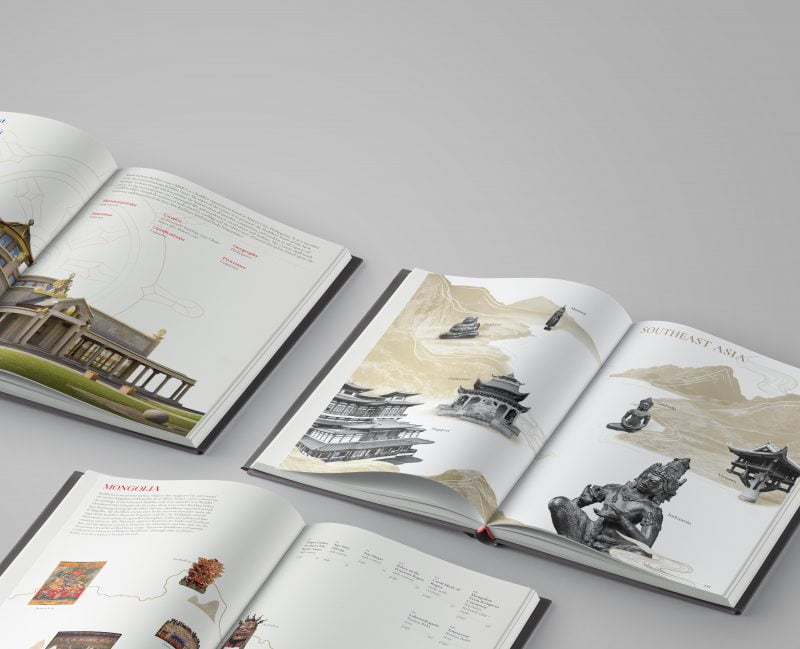
-
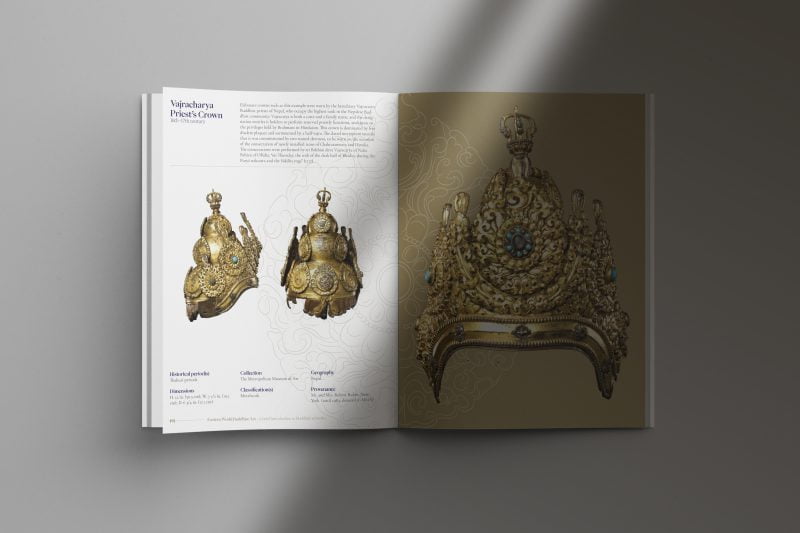
-
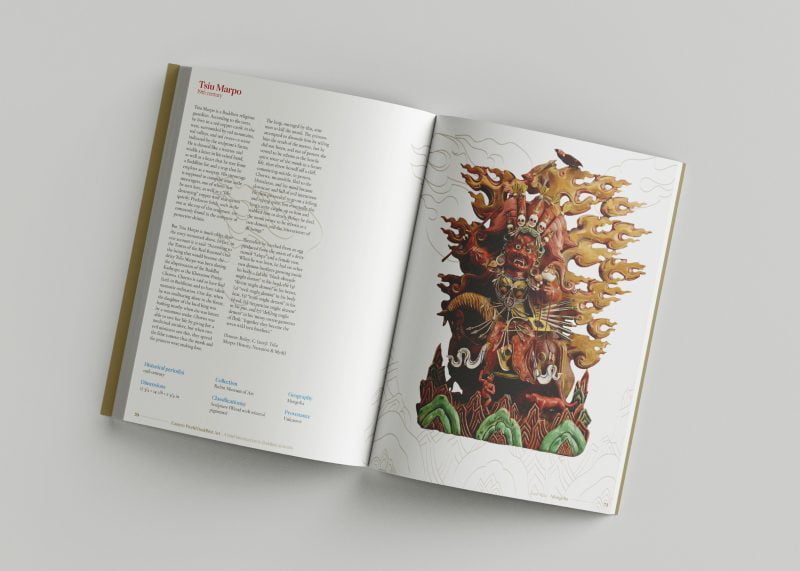
mockups-design.com -
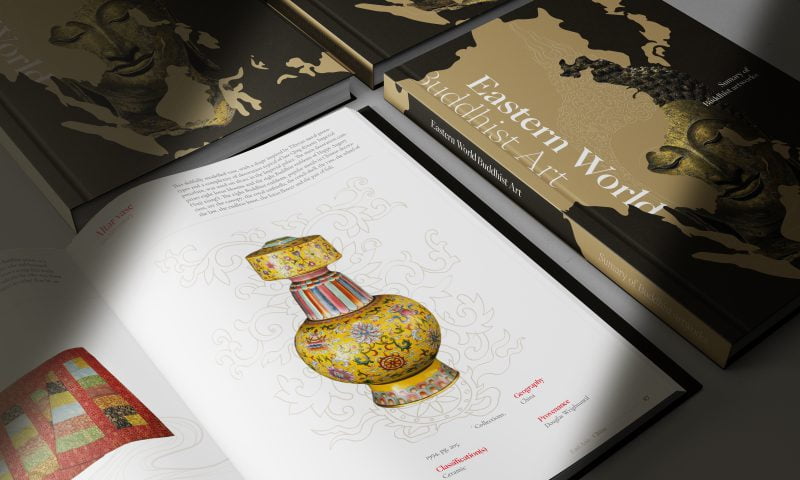
So why did you choose an artbook and not another form of visual approach?
Due to the nature of the subject, two forms of expression will be chosen: artbook and magazine. At that time, the group thought that the artbook would help us express all the personality and ego of the group to the topic rather than the magazine, so we finally agreed to choose the artbook approach.
Can Hoang Do share a bit about the process of making an artbook? Specifically, how do each of you undertake the stages?
After choosing the topic of Buddhism as a subject for the subject, I developed the project and contacted teachers with expertise in this field to discuss. As a result, the topic is defined more specifically and clearly.
In addition, the group also consulted artbooks at The Factory in District 2. There is a library containing very good art books and artbooks. Here we learn how to set the contents, how to operate an artbook.
After the above stages, the designs have been shaped. I look for a moodboard (a table containing data, images, and different textures so that viewers can visualize the designer’s ideas) to be able to identify with the lecturer the mood & tone of the topic, then find Search for typeface (typeface), color, …. Finally, synthesize and determine the Art Direction of the project.
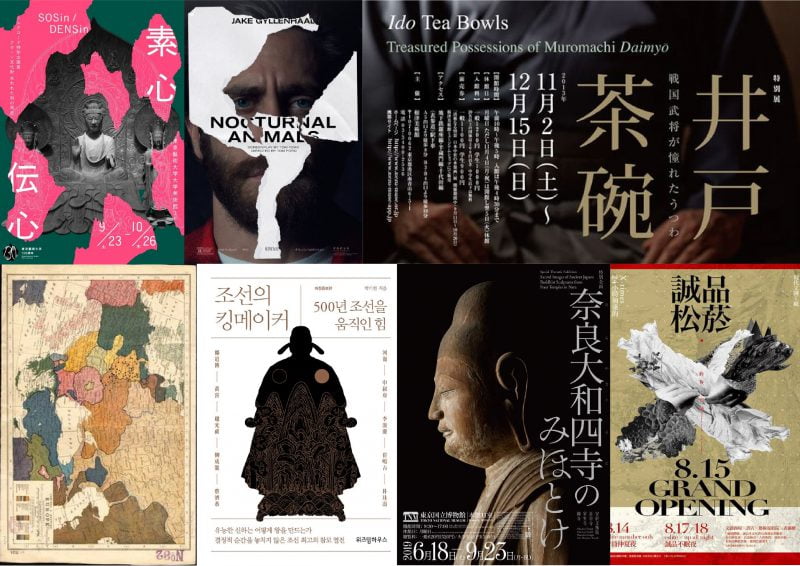
The group together determined the scope of the project to be in East Asia, South Asia and Southeast Asia, also known collectively as the Oriental countries. Then create a roster for people to find information, images, categorize by cover, moodboard, style scape, template, content and image, layout master, pattern, mockup and proceed.
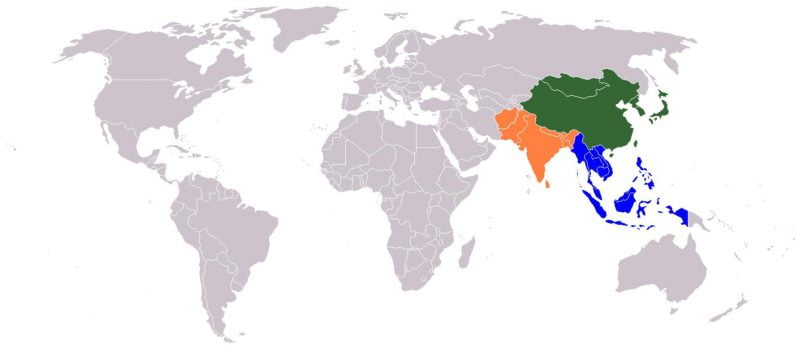
In the end, I gathered all the information and arranged it into a complete file. The mockup stage is found and done by the team members.
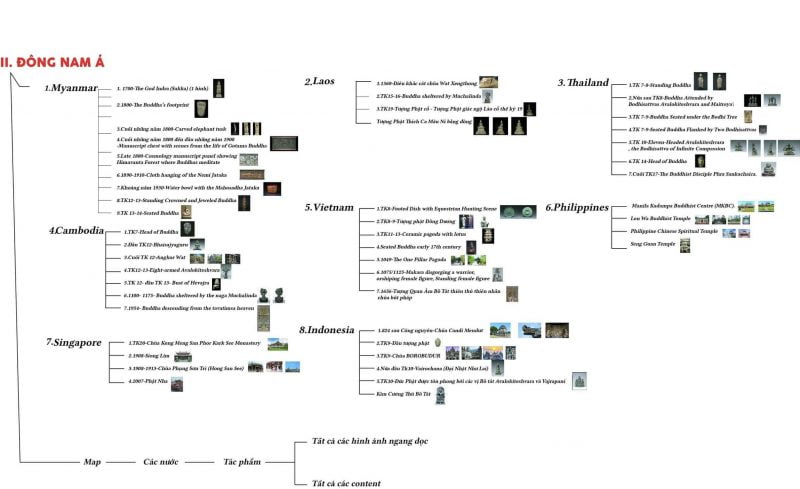
With the number of 212 artbook pages, it means that you have to process a huge amount of information. How did you conduct the research and process the information? On what criteria are the placement of images and information selected?
Indeed, this is a great challenge for the group. With a huge amount of information, we have planned a clear division so that we can check the information easily without confusing it with another section. (Each file will be named after each country, in each country will have the name of each work).
Together, we searched relevant sites like MET, Google Arts & Culture, etc. to get official images and information.
The selection of images and information is based on the following criteria:
1. The legitimacy of the work
2. Impressive level
3. Material of the work
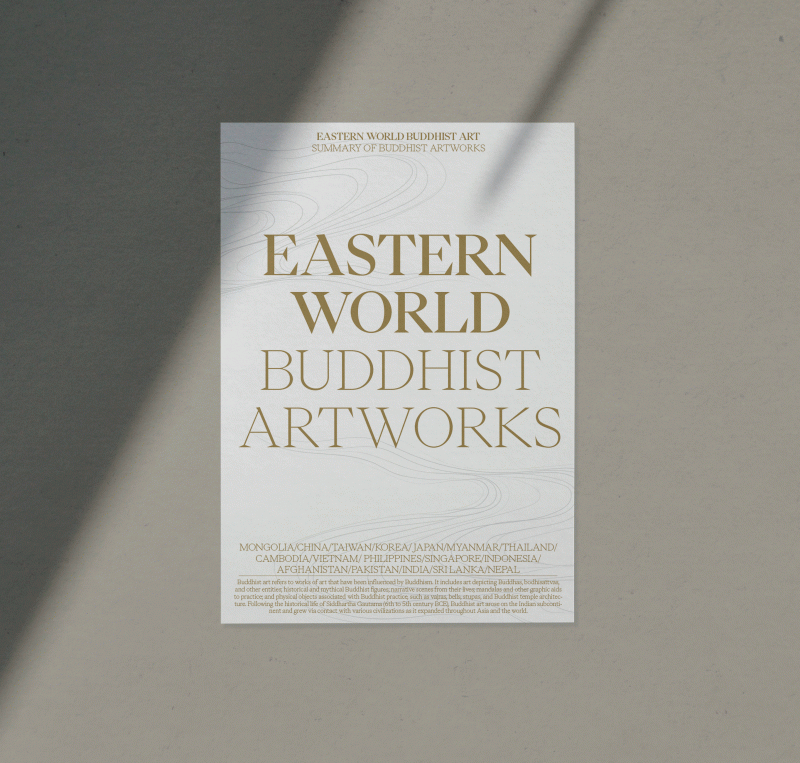
It can be seen that you have invested a lot of effort and diligence in each artbook page. Each page of the book is a different set of patterns to match the images and content. Can you share a bit about this aspect?
The selected cloud pattern appears with a high frequency with the desire to create closeness to the topic as well as the pages that cannot use the pattern.
With different sets of patterns drawn with detailed vectors of the work on the display page, both highlight the beauty of the work and help the layout to be more complete. Each work has a different shape, so each recreated image also has its own characteristics to impress viewers.
-
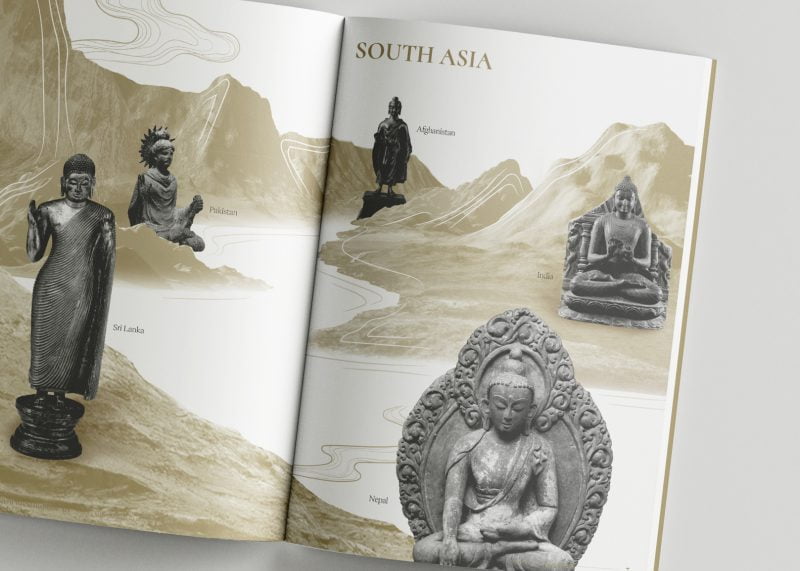
-
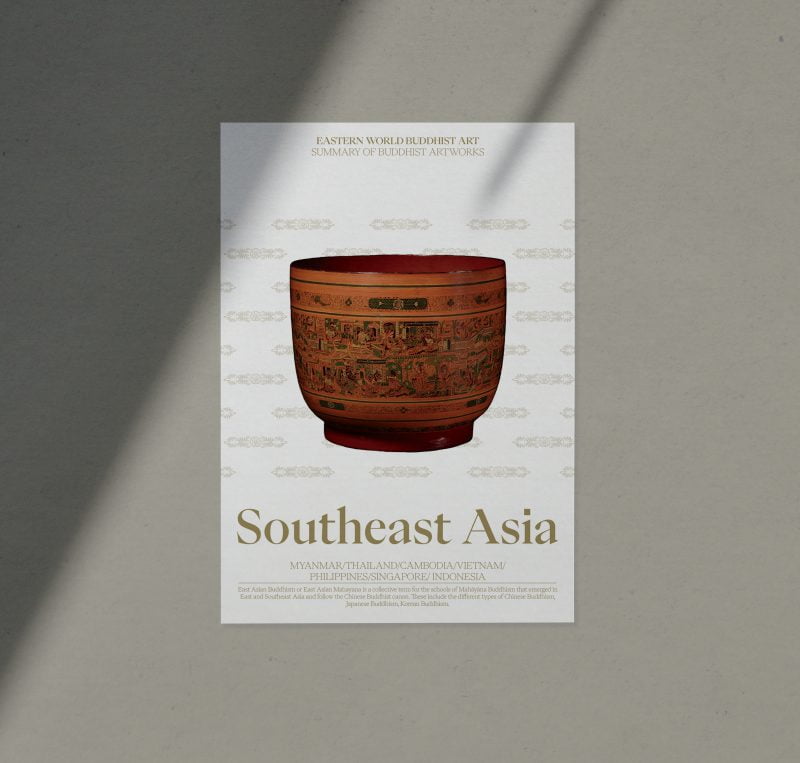
-
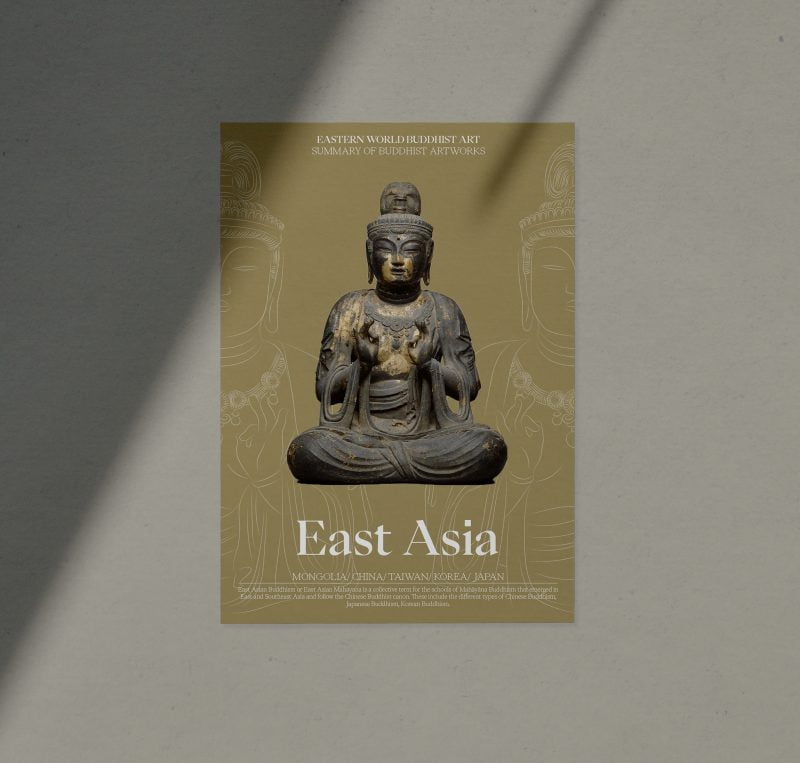
Save the date wedding invitation card mockup -
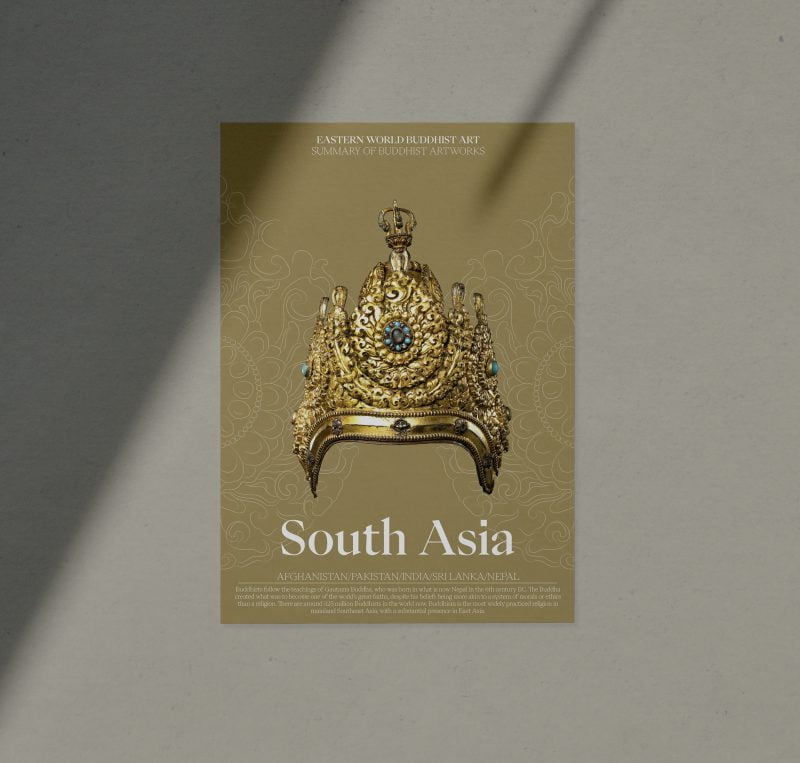
So what is the design style of the Eastern World Buddhist Art artbook? Why did you choose this design style for the artbook?
The artbook is a combination of two design styles: minimalism and line art. In our opinion, to be able to convey full information and vivid images, the layout must be clear and clean; hence the style of minimalism is chosen. However, to create emphasis and avoid the artbook looking like a book, we have incorporated a line art style into the project.
During the project implementation, what was the most difficult stage?
In our opinion, the most difficult stage is determining the title of the topic. If it is not enough to say that the Eastern Word Buddhist Art artbook is the title of the subject, it must be supported by the subtitle: Summary of Buddhist artworks , the title itself will be more meaningful.
And to be able to form the idea, the group had to get lost in the topic of Buddhism many times, and thanks to the instructor’s guidance, we were able to lead to this topic.
Artbook in Vietnam is probably no longer a new concept, but this is a rather picky genre for readers. So what development orientation do you have for this artbook in the future?
It is true that artbooks are inherently very picky about readers and the number of people interested in this topic is not much. Therefore, in order to develop this artbook in the future, our products must first reach the level of perfection. After that, we will link with investment places so that the artbook can be commercialized. In addition, we also think of another approach, which is to publish the free book so that everyone can easily access it.
Thank you Hoang Do! Hopefully the artbook will be released to future readers soon!
See detailed artbook here

